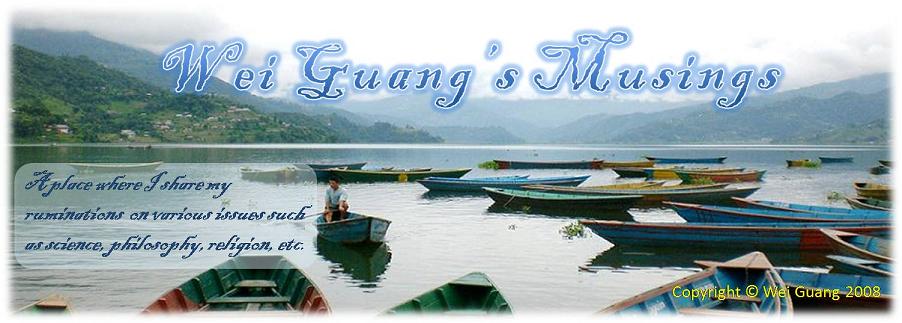It was indeed a loss to the world that one of the world's most visionary and renowned science fiction author has passed away. Arthur C. Clarke, one of my favourite sci-fi authors, passed away on 19 March 2008 at the age of 90. I started reading his books when I was in secondary 1 and it was through his vastly imaginative and thought-provoking stories that cemented my love for sci-fi. Contrary to general sentiments, sci-fi is not just totally nonsensical ideas. Rather, most ideas in sci-fi stories are based on scientific theories (especially those sci-fi stories written by scientists or engineers). Contemporary sci-fi also explores a variety of issues ranging from philosophy to psychology and even politics. It is no mean feat to reconcile the schism between mainstream literature and hard core science and to bring across scientific ideas to the masses in an accessible manner through stories. Few can claim to be able to do this as skilfully as the late Arthur C. Clarke. Indeed stories have been around since the dawn of civilization and have tremendous power in disseminating ideas and influencing the masses. What better way to spread scientific ideas and stretch the imagination of human minds than through stories? Herein underscores the undervalued importance of science fiction in the modern society.
Arthur C Clarke wrote 100 books, more than 1,000 short stories and essays over 60 years. Some of his best-selling novels include ‘Childhood's End’ (which is my personal favourite), 2001: A Space Odyssey (The Oscar-nominated movie of the same title was based on this book), ‘Rendezvous with Rama’ and ‘Fountains of Paradise’. Trained in physics and mathematics, Sir Arthur also wrote many books and essays of non-fiction on space travel, communication technologies, underwater exploration and future studies.
It is widely believed that Clarke's most important scientific contribution is his idea of using geostationary satellites as ideal telecommunications relays. He wrote a paper titled ‘Extra-Terrestrial Relays — Can Rocket Stations Give Worldwide Radio Coverage?’, which was published in Wireless World in October 1945 delineating how the concept of geostationary orbit can be put to practical use. The geostationary orbit is now sometimes known as the Clarke Orbit or the Clarke Belt in his honour. This shows why we should pay attention to sci-fi writers, for we never know if some wacky idea which is deemed impossible today will be possible and useful tomorrow. Jules Verne’s idea of an underwater submersible ages before the development of the first submarine is another example of the prophetic power of science fiction. Indeed, Arthur C. Clarke once said that ‘in order to find out the limits of the possible, we have to venture a little way past them into the impossible’. Never has the words of someone had such a profound impact on my thinking than those of Arthur C. Clarke’s.
Before his death, Clarke said: "I’ve had a diverse career as a writer, underwater explorer, space promoter and science populariser. Of all these, I want to be remembered most as a writer – one who entertained readers, and, hopefully, stretched their imagination as well." Well, he has undoubtedly stretched my imagination and I believe that of many other people too.
“It may be that the old astrologers had the truth exactly reversed, when they believed that the stars controlled the destinies of men. The time may come when men control the destinies of stars.” -Arthur C. Clarke, First on the Moon, 1970
As a leading proponent for space travel and exploration, Clarke has also chaired several space advocacy organizations. I do believe the day will come when mankind will advance into a stage 2 or even stage 3 civilization and alter the destinies of stars as Clarke prophesized.
Arthur C. Clarke’s even came up with 3 ‘laws’ of prediction which he called it Clarke’s 3 Laws:
1. When a distinguished but elderly scientist states that something is possible, he is almost certainly right. When he states that something is impossible, he is very probably wrong.
2. The only way of discovering the limits of the possible is to venture a little way past them into the impossible.
3. Any sufficiently advanced technology is indistinguishable from magic.
As a fitting eulogy, I decided to name the title of this article ‘Arthur C. Clarke’s Final Odyssey’ after one of his books in the Space Odyssey series, ‘3001: Final Odyssey’. I highly recommend you to read his novels and be inspired by one of the greatest masters of sci-fi. Arthur C. Clarke may no longer exist on this world, but his legacy will forever live on in his books and be immortalized in the minds of his fans.
My recommendations:
• Childhood's End
• The Light of Other Days
• 2001: A Space Odyssey
• 2010: Odyssey Two
• 2061: Odyssey Three
• 3001: Final Odyssey
• Rendezvous with Rama
• Against The Fall Of Night
• Time's Eye
• Sunstorm





